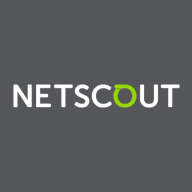

InfluxDB and NETSCOUT vSTREAM are competing in time-series databases and network performance monitoring. InfluxDB offers cost-efficient storage and analytics, while NETSCOUT vSTREAM provides superior network insights, making it ideal for enterprises prioritizing comprehensive features.
Features: InfluxDB offers robust time-series data processing, high-performance real-time analytics, and flexible scaling options. It ensures efficient storage solutions, making it suitable for data-intensive operations. NETSCOUT vSTREAM provides deep network traffic visibility, real-time monitoring, and diagnostic capabilities, enabling extensive network performance analysis.
Room for Improvement: InfluxDB could enhance its customer support features, expand its advanced analytics, and optimize data visualization tools. NETSCOUT vSTREAM can improve its user interface for easier navigation, reduce complexity in deployment, and offer more budget-friendly pricing options.
Ease of Deployment and Customer Service: InfluxDB provides straightforward deployment with comprehensive documentation suitable for rapid setup, whereas customer service is minimalistic but efficient. NETSCOUT vSTREAM involves a complex deployment due to advanced features, offering robust customer service for setup and maintenance support.
Pricing and ROI: InfluxDB's low setup costs are attractive for startups and smaller businesses, ensuring quick ROI through efficient analytics capabilities. NETSCOUT vSTREAM, despite higher initial costs, is designed for enterprises seeking in-depth functionality, providing value through enhanced network performance monitoring over time.
| Product | Market Share (%) |
|---|---|
| InfluxDB | 0.4% |
| NETSCOUT vSTREAM | 0.3% |
| Other | 99.3% |

| Company Size | Count |
|---|---|
| Small Business | 4 |
| Midsize Enterprise | 3 |
| Large Enterprise | 6 |
InfluxDB is open-source software that helps developers and enterprises alike to collect, store, process, and visualize time series data and to build next-generation applications. InfluxDB provides monitoring and insight on IoT, application, system, container, and infrastructure quickly and easily without complexities or compromises in scale, speed, or productivity.
InfluxDB has become a popular insight system for unified metrics and events enabling the most demanding SLAs. InfluxDB is used in just about every type of industry across a wide range of use cases, including network monitoring, IoT monitoring, industrial IoT, and infrastructure and application monitoring.
InfluxDB offers its users:
InfluxDB Benefits
There are several benefits to using InfluxDB . Some of the biggest advantages the solution offers include:
Reviews from Real Users
InfluxDB stands out among its competitors for a number of reasons. Two major ones are its flexible integration options and its data aggregation feature.
Shalauddin Ahamad S., a software engineer at a tech services company, notes, “The most valuable features are aggregating the data and the integration with Grafana for monitoring.”
The vSTREAM virtual appliance complements existing Adaptive Session Intelligence (ASI)-based instrumentation to provide the same level of visibility within virtualized and cloud infrastructures that is already possible in physical environments. The vSTREAM virtual appliance is ideal for monitoring service-critical traffic running within virtualized or cloud infrastructures, either locally on a host or as an aggregation point for multiple hosts. With complete visibility across physical, virtual and cloud networks, the vSTREAM virtual appliance presents real-time views of end-to-end call trace data and network-wide KPIs, to protect the reliability and availability of networks and application services.
We monitor all Network Monitoring Software reviews to prevent fraudulent reviews and keep review quality high. We do not post reviews by company employees or direct competitors. We validate each review for authenticity via cross-reference with LinkedIn, and personal follow-up with the reviewer when necessary.